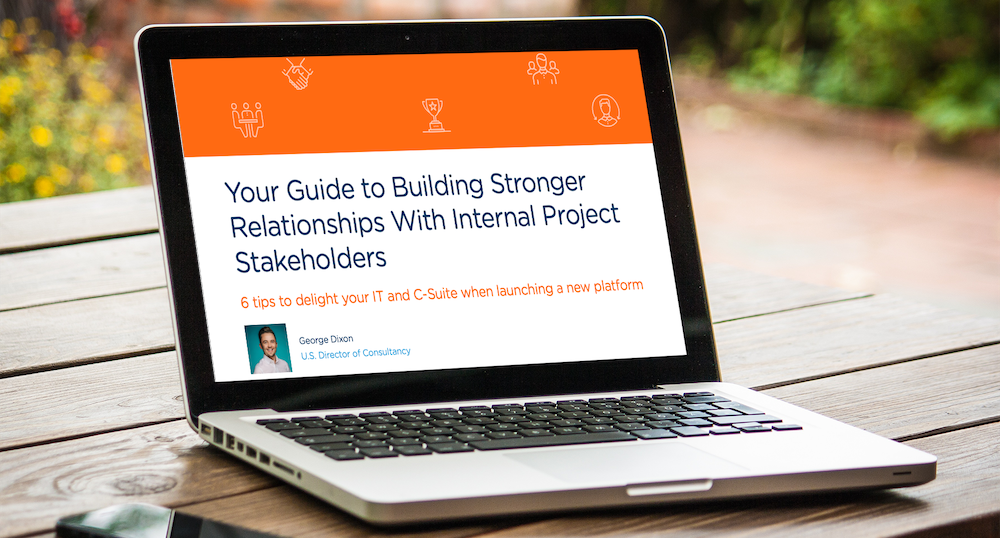Like most major cultural initiatives, no employee benefits strategy can get off the ground without support from senior leaders.
The problem is that communicating your vision and getting buy-in from the top brass within your business isn’t always so straightforward. Senior management teams often tend to focus on the bottom line of their balance sheet more than company culture and employee engagement.
I always like to think about the employee engagement gap study done by the Harvard Business Review. They asked thousands of business leaders “do you think employee engagement is critical to the success of your organisation,” of which, 71% said they did, however, when the same leaders were asked if their own workforce was highly engaged, only 24% of them said yes, which is the engagement gap we live with today.
It’s your job to help them see the value in investment and take a more holistic view of organisational performance and overall employee engagement.
These useful tips will help you approach the conversation with your CEO and make sure that all senior stakeholders understand the reasons to invest in employee benefits.

Discover how to gain buy-in from leadership and C-suite when launching a new platform
Tip #1 – Lay out the business case
 There are countless ways in which strengthening your Employee Value Proposition beyond salary can benefit company performance. First though, senior leaders need to see how company culture connects with their core business strategy and understand the return they stand to gain from their investment.
There are countless ways in which strengthening your Employee Value Proposition beyond salary can benefit company performance. First though, senior leaders need to see how company culture connects with their core business strategy and understand the return they stand to gain from their investment.
Rather than going straight in with a brand new company-wide initiative, a good starting point is to look at the main goals and KPIs that senior leaders already value. For instance, if your CEO is focussing heavily on improving customer service at the moment then you can work backwards to explain that employees first need to feel engaged, motivated and psychologically healthy if they are to provide a high level of service. Whatever your specific focus, demonstrating these connections between culture and performance is key.
Tip #2 – Draw from industry research (and your own data!)
 Most companies today are sitting on a goldmine of proprietary employee data – and that data is providing vital ammo for HR and people management teams to gain a stronger voice in the boardroom. Being able to call out trends in key performance indicators like staff retention, turnover, engagement and absence is incredibly useful, particularly if you’re able to spot and solve chinks in day-to-day operations.
Most companies today are sitting on a goldmine of proprietary employee data – and that data is providing vital ammo for HR and people management teams to gain a stronger voice in the boardroom. Being able to call out trends in key performance indicators like staff retention, turnover, engagement and absence is incredibly useful, particularly if you’re able to spot and solve chinks in day-to-day operations.
Conducting the occasional pulse survey is a great tactic to benchmark KPIs and demonstrate the impact that certain initiatives have made. Without this data it can be hard to keep track of improvements, let alone make them easy to digest for senior stakeholders.
Also don’t forget to stay on the pulse of the latest best practices within your industry to find out what competitors are doing differently and make sure your business isn’t missing out on any competitive advantages.
Tip #3 – Take chances to connect with your CEO
 Although senior leaders are becoming more open and aware of ideas like wellbeing, engagement and employee experience, it’s still crucial to talk through these concepts with your CEO and share your take on things. This is the only way to align your benefits strategy with their wider vision.
Although senior leaders are becoming more open and aware of ideas like wellbeing, engagement and employee experience, it’s still crucial to talk through these concepts with your CEO and share your take on things. This is the only way to align your benefits strategy with their wider vision.
Speaking at the recent Reward Gateway Summit, CEO Doug Butler mentioned his thoughts on getting buy-in from senior executives:
“A successful business has a lot of very passionate, specialised people in different areas. It’s the job of the executive team to give time to each network and make sure they have a chance to communicate what they’re working on. It’s also an opportunity to discuss any fresh initiatives they have in the pipeline.
“We do that at least once a quarter, though sometimes a department lead will get in touch to arrange a presentation if it’s something important. As senior leaders we always try to encourage autonomy and free thinking, though ideally this should be tied back to the main direction and mission of our organisation. That’s what really gets our attention.”
If you're interested in learning more about how our employee benefits program can support your business goals, get in touch with us and a member of our team will walk you through our solutions.
 Oliver Munday
Oliver Munday



